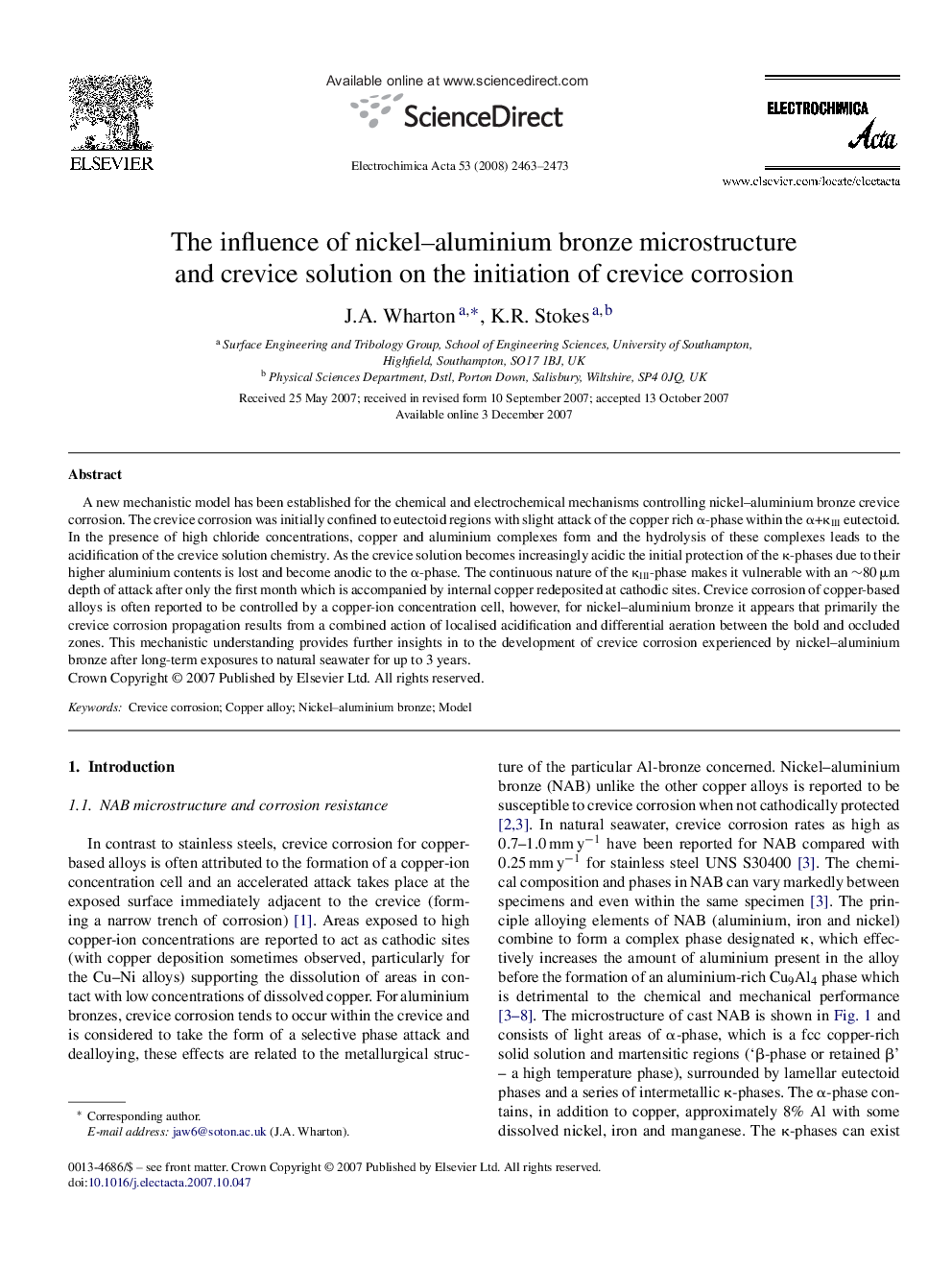| کد مقاله | کد نشریه | سال انتشار | مقاله انگلیسی | نسخه تمام متن |
|---|---|---|---|---|
| 193881 | 459779 | 2008 | 11 صفحه PDF | دانلود رایگان |

A new mechanistic model has been established for the chemical and electrochemical mechanisms controlling nickel–aluminium bronze crevice corrosion. The crevice corrosion was initially confined to eutectoid regions with slight attack of the copper rich α-phase within the α+κIII eutectoid. In the presence of high chloride concentrations, copper and aluminium complexes form and the hydrolysis of these complexes leads to the acidification of the crevice solution chemistry. As the crevice solution becomes increasingly acidic the initial protection of the κ-phases due to their higher aluminium contents is lost and become anodic to the α-phase. The continuous nature of the κIII-phase makes it vulnerable with an ∼80 μm depth of attack after only the first month which is accompanied by internal copper redeposited at cathodic sites. Crevice corrosion of copper-based alloys is often reported to be controlled by a copper-ion concentration cell, however, for nickel–aluminium bronze it appears that primarily the crevice corrosion propagation results from a combined action of localised acidification and differential aeration between the bold and occluded zones. This mechanistic understanding provides further insights in to the development of crevice corrosion experienced by nickel–aluminium bronze after long-term exposures to natural seawater for up to 3 years.
Journal: Electrochimica Acta - Volume 53, Issue 5, 1 January 2008, Pages 2463–2473